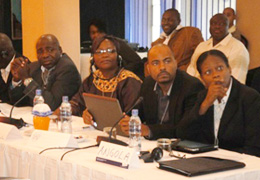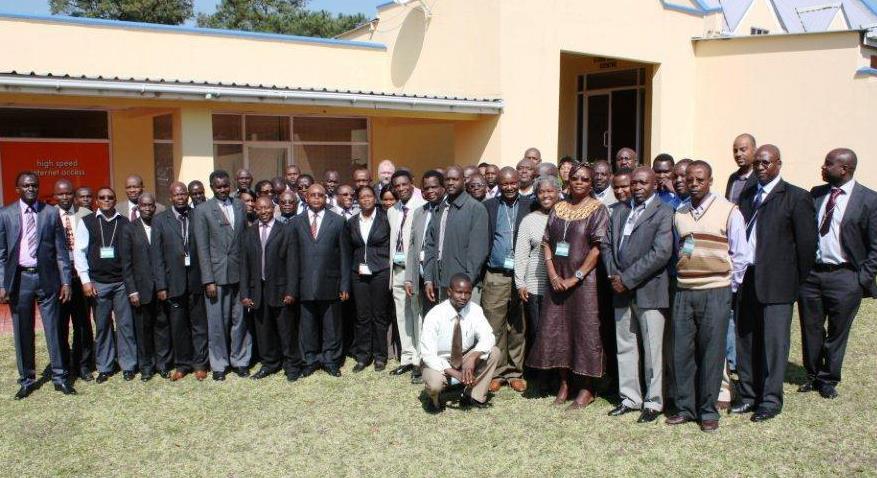A two-day meeting of senior veterinary officials, called by the Southern Africa Development Community (SADC) in Chingola, Zambia, on the border with the Democratic Republic of Congo, enabled to present, debate and agree on a common approach to halt and eventually eradicate Peste des Petits Ruminants or PPR, a deadly disease of sheep and goats, from the region.
The 4-person delegation from Angola, headed by the Deputy Director General of the Institute of Veterinary Services, Dr Bernadette Santana (right). Picture (c) P. Bastiaensen (oie) 2011
For the last decades, PPR has been progressing from west to central and east Africa, crossing over to the middle east, and recently spread to southern Africa, where in a matter of months, both the DRC (2005) and Tanzania (2008) declared PPR outbreaks to the OIE. This cross-border harmonisation meeting, supported by the SADC TADs project, brought together representatives from those two affected countries, as well as directly threatened neighbouring countries : Angola, Malawi, Mozambique and Zambia. The latter announced that sero-surveillance in the border areas with DRC and Tanzania had already led to the detection of sero-positive cases, but no clinical cases. The 50-odd participants, amongst which representatives from OIE, FAO, AU-IBAR, BVI and GALVmed, also visited the border crossing between Zambia and DRC in Kasumbalesa to take stock of the trafic between these two countries and the formal and informal cross-border trade in small ruminants.
The regional strategy which resulted from this meeting and which will be initiated in a matter of weeks, includes a comprehensive programme of epidemiological surveillance to be undertaken on both sides of the borders with DRC and Tanzania, the establishment of a protection zone along those same borders where all susceptible livestock will have to be vaccinated and the development of minimal laboratory capacity in all six states, based on the OIE-recommended competition-ELISA test.
The OIE will assist in the identification of suitable candidate-laboratories, endorsed by SADC, for a twinning programme with one of the two OIE international reference laboratories. Given the vulnerability of goat-and sheep-keeping smallholders, Member States resolutely opted for a vaccination-based prevention and eradication strategy, rather than stamping-out, and adequate attention will be given to upstream advocacy of politicians and downstream awareness-raising of farmers and rural communities. Finally an appeal to governements and cooperating partners will be launched to support the roll-back of PPR from this region with adequate funding for at least the next 5 years. The submission of a FAO regional TCP project has been recommended, as well as the establishment of a regional emergency fund in which Member States further south, such as Botswana and South Africa, could contribute to assist in keeping the disease at bay.
The strategy is still to be endorsed by the SADC Livestock Technical Committee of all 15 Member States. The programme will be coordinated by the SADC Secretariat and progress monitored through the regular meetings of the statutory sub-committees on veterinary epidemiology and informatics, and laboratory services.
Group-photograph. Picture (c) S. Khaiseb (cvl) 2011


